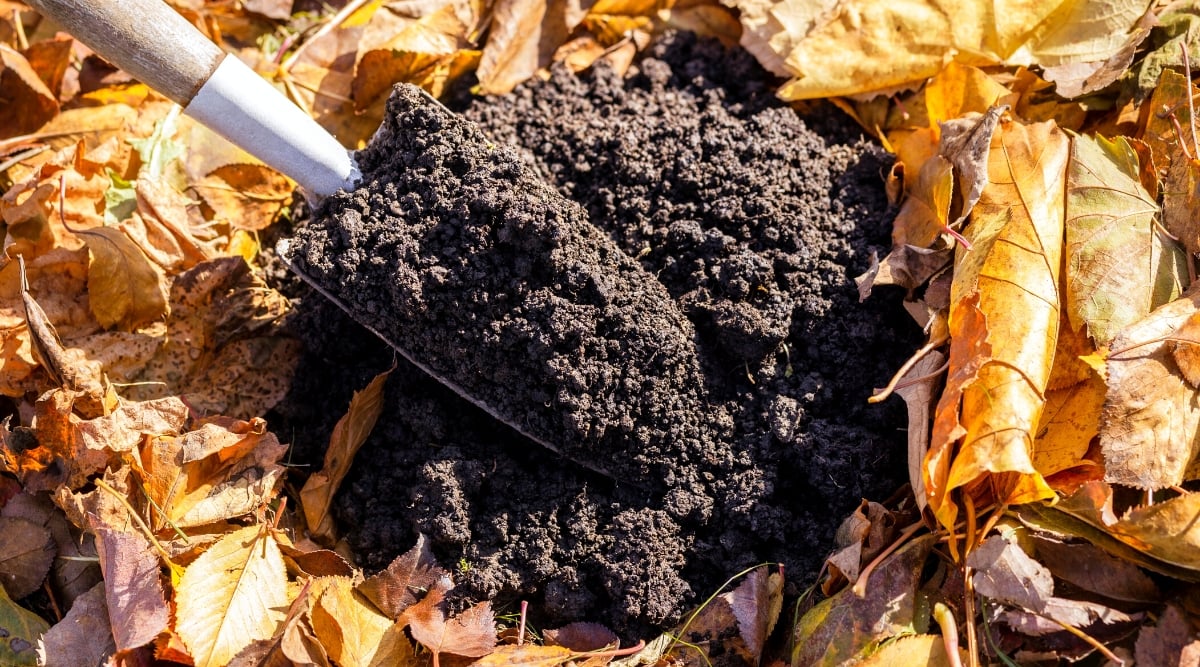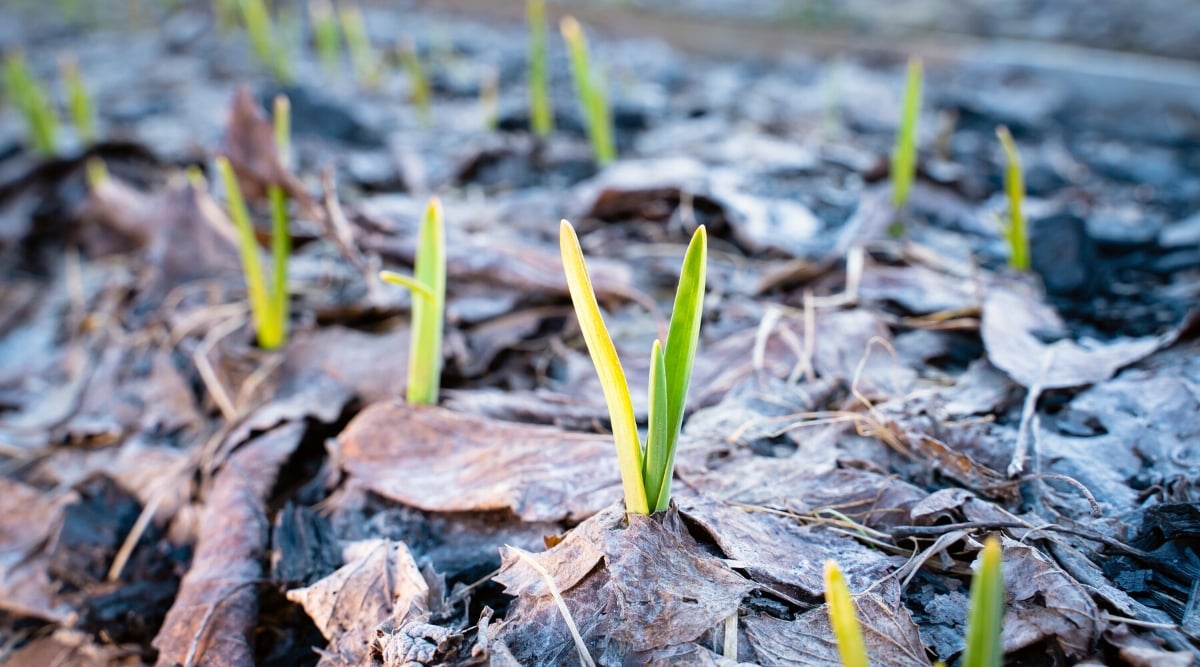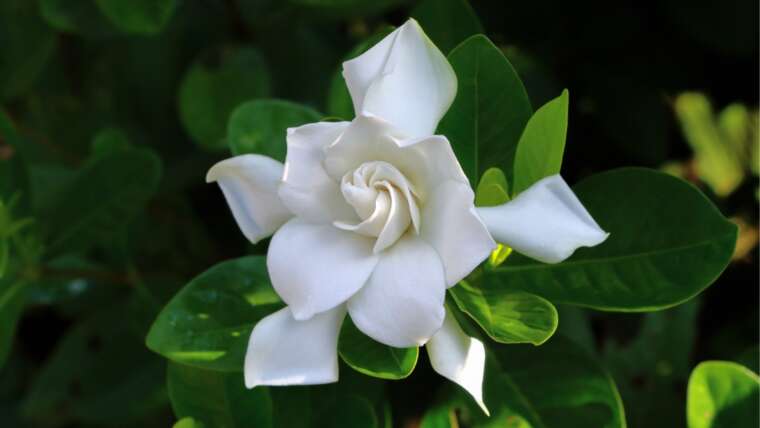The excitement of putting together a brand-new raised bed can be quickly dampened by a single important question – do I have enough soil to fill it with? Filling raised beds can be pricey if you’re using soil alone, so many gardeners look for other materials to take up space without breaking the bank.
If you have bags of leaves lying around, you’ve probably considered throwing those in the bottom of your bed to take up space. But how you use the leaves should be considered before you take the plunge.
The Short Answer
Fall leaves are a cost-effective and easy-access way to take up space in raised beds, allowing you to put your garden waste to good use. They also retain moisture well and slowly break down to boost soil health over time.
Unfortunately, there are a few downsides to consider, from reduced soil levels over time to a slow decomposition time. But the most troubling downside is the lack of nitrogen in the soil during decomposition, competing with plants and leading to a nutrient imbalance.
You shouldn’t fill raised beds with only leaves and topsoil. However, there are several ways to incorporate them in your raised bed layers to counteract the downsides and improve the health of your plants.
The Long Answer
One of the major benefits of raised bed gardening is complete control over soil conditions. If your garden soil isn’t great or doesn’t match the needs of the plants you want to grow, you can bypass it altogether and tailor the soil to your specific plants.
Unfortunately, this responsibility does come with a downside. Choosing the wrong filling for your beds could mean a struggle for the rest of the season (or a ton of labor to change out all the soil and the plants). It’s vital to consider what goes into your raised beds from the start to provide the ideal foundation for lush plant growth.
One of the toughest parts of filling a raised bed – especially a taller bed – is space. It takes a deceptively large amount of soil to fill a raised bed, so the more space you can take up with other materials, the better.
If you have old fall leaves you don’t know what to do with, you may have considered using them to fill space in beds before layering them with soil. But before you jump in, it’s important to understand the pros and cons, particularly regarding soil and plant health.
The Pros
Let’s start with the pros – the reasons why many consider using leaves in the first place.
Cost Saving
Reuse fall leaves in beds to save on soil costs.
The primary reason gardeners want to reuse fall leaves in beds is the cost. Filling a raised bed with high-quality soil is not cheap, especially if your raised bed is large or you have many to fill at once. If you can fill parts of the bed with other materials that don’t cost a cent, you can save your budget for better soil and, more importantly, the plants themselves.
Improving Soil Structure
 Decomposed leaves enhance soil structure and moisture retention and attract beneficial organisms.
Decomposed leaves enhance soil structure and moisture retention and attract beneficial organisms.
Decomposed leaves, known as leaf mold, are a great soil amendment in the garden. Once the leaves have decomposed, they will increase moisture retention in the beds and boost overall soil structure. Leaf mold also attracts plenty of beneficial soil organisms like earthworms that improve soil health, too.
Moisture Retention
 Utilizing leaves in raised beds conserves moisture, benefiting plants and reducing water needs.
Utilizing leaves in raised beds conserves moisture, benefiting plants and reducing water needs.
Using leaves in raised beds aids in moisture retention, limiting your need for water. This is great for thirsty plants that need consistent moisture to thrive. It’s also a great way to combat dry soil in warmer climates (particularly in summer), lowering your water usage.
Easy to Find
 Fall leaves, readily available in gardens, are easy and cost-effective raised bed fillers.
Fall leaves, readily available in gardens, are easy and cost-effective raised bed fillers.
Besides cost saving, one of the major pros is that they’re easy to find. Once you’ve cleaned up around your garden, filling raised beds is a great way to recycle your garden waste if you don’t have a compost heap. For slightly lazy gardeners like myself, this beats sourcing or shopping by miles.
The Cons of Using Leaves
Most of the pros revolve around convenience. But when you look at the cons, you’ll notice they have more to do with the health of the plants in the long term.
Quantity Needed
 Free leaves for raised beds are great, but it takes a lot of leaves for a measurable impact.
Free leaves for raised beds are great, but it takes a lot of leaves for a measurable impact.
Although leaves are free, you still need lots of them to take up any significant space in your raised beds. If you don’t have many trees in your backyard, they will probably have more of an impact when added to your compost heap than in covering a small layer at the bottom of your raised bed.
If you’re not a fan of raking, you’ll also need to do a lot of tidying to make the leaves usable. They need to be compacted as you fill, so consider that while bagging them up.
Lack of Volume
 Using fall leaves in raised beds may create air pockets if you don’t compact them down.
Using fall leaves in raised beds may create air pockets if you don’t compact them down.
Speaking of compacting, another con is a lack of volume. You don’t want to make the mistake of filling a raised bed with airy materials only to find the soil level dropping significantly later in the season as materials break down.
When you first fill your bed with leaves, several air pockets need to be removed by compacting and adding moisture. If you don’t follow this process, you’ll spend more money on soil to fill empty gaps at the top of the bed anyway.
Takes Time to Break Down
 Rich in carbon, leaves decompose slowly and can take a while to break down.
Rich in carbon, leaves decompose slowly and can take a while to break down.
If you want the benefits of leaf mold mentioned above, the leaves must first break down. But fall leaves are mostly made up of carbon, which decomposes much slower than you may expect.
Although it seems like they should break down quickly, they will typically turn into leaf mold within a year – not something you want if you’re planting your seedlings now. Until they break down, they will be taking up space and don’t immediately provide the benefits that leaf mold does.
There are ways to speed up decomposition, like shredding the leaves and mixing them with compost, so consider these before deciding how to fill your bed. If you have a healthy earthworm population in your area, you may also find that they’ll help you break down the leaves quickly.
Impacts Root Growth
 Careful plant selection is needed initially, as the leaf layer can restrict the growth of deep-rooted crops.
Careful plant selection is needed initially, as the leaf layer can restrict the growth of deep-rooted crops.
Following the previous con, you must also plant carefully in the first year or so. Because the leaves will still be leaves and not leaf mold, the leaf layer won’t provide the right conditions for root growth. In fact, the large air pockets created by using leaves can actually limit root growth unless you’ve provided a deep enough soil layer or compacted them well.
It’s best to avoid planting anything with deep roots that can reach the leaf layer in the first few seasons to avoid a disappointing harvest. Shallow-rooted crops like leafy greens will grow much better as the roots will only cover your soil layer.
Nutrient Imbalance
 High carbon content can slightly reduce the available nitrogen, which is crucial for robust plant growth.
High carbon content can slightly reduce the available nitrogen, which is crucial for robust plant growth.
The most important con relates to nutrient availability. As mentioned, fall leaves are largely made up of carbon, which takes a while to break down. The higher carbon-to-nitrogen ratio causes microbes to use nitrogen from the soil during decomposition, limiting the amount of nitrogen available to your plants.
This usually only impacts the inch or so of soil directly in contact with the leaf layer, but if you’ve only got a shallow layer of soil on top of the leaves or you’re starting new seedlings in the top inch, this may temporarily slow growth.
Since nitrogen is incredibly important in plant growth, aiding in the development of strong leaves and stems and completing several other functions, lack of nitrogen is the last thing you want in your raised beds.
How To Use Fall Leaves To Fill Raised Beds
Considering the cons, I recommend avoiding filling your raised beds with fall leaves alone and topping them with soil only. However, that doesn’t mean you can’t make use of them at all. With some adjustments and a few amendments, there are ways to incorporate them that won’t harm your plants.
Shred the Leaves
 Speed up leaf decomposition by shredding them with a mower for quicker integration.
Speed up leaf decomposition by shredding them with a mower for quicker integration.
To speed up the decomposition process, shred your leaves before you use them in your raised beds. If you don’t have a shredder, a lawn mower is the best way to do this (although you should use the mower bag or be prepared for a mess). Smaller pieces will break down much faster and integrate better with the soil you fill the bed with.
Shredded leaves also leave fewer pockets of air, making the compacting process much easier without the risk of forming an impenetrable mat.
Compost First
 For better results, add to compost or turn into leaf mold.
For better results, add to compost or turn into leaf mold.
If you’re willing to be patient, it’s better to allow them to decompose into leaf mold or add them to your compost pile before you add them to your raised beds. This way, you get all the soil-boosting benefits without the risks of the leaves decomposing right under your new plants.
To make leaf mold, place leaves in garbage bags and moisten them. Add a few holes to the bag to allow air to flow through. Continue checking on them and add more moisture when the leaves start to look dry. Once they’ve broken down completely, you can use them to fill your raised beds.
Alternatively, throw them on your compost pile with other garden materials and wait for them to break down there.
Combine With Other Scraps
 Accelerate bed filling by layering with other scraps in hügelkultur mounds.
Accelerate bed filling by layering with other scraps in hügelkultur mounds.
For impatient gardeners who need to fill beds now, you can counteract the cons by combining them with other garden scraps in layers. This method is known as hügelkultur and usually involves mounding layers into a bed shape, although it works just as well in pre-constructed beds.
Adding layers of logs, branches, and sticks mixed with other green garden scraps takes up plenty of space in your beds without risking nutrient imbalance. This layer is covered with compost to aid in decomposition and then topped with soil for planting.
Use as Mulch
 Use shredded fall leaves as effective mulch on top of beds to retain moisture.
Use shredded fall leaves as effective mulch on top of beds to retain moisture.
The final option is to use your fall leaves on top of your beds rather than at the bottom. Shredded leaves can be an effective mulch, helping retain moisture in the soil and regulate temperature. Mulch is also great for keeping weeds down and making those that do pop up easier to pull.
Shredded leaves will still draw some nitrogen from the soil, but usually only in the very top inch or so, avoiding the roots lower down. It may not be the best mulch for shallow-rooted plants, but it remains useful for crops with deeper roots.
Final Thoughts
Fall leaves alone may not be the best option for filling a raised bed. But there are several ways to use your leaves that reap all the benefits without the negative side effects.




